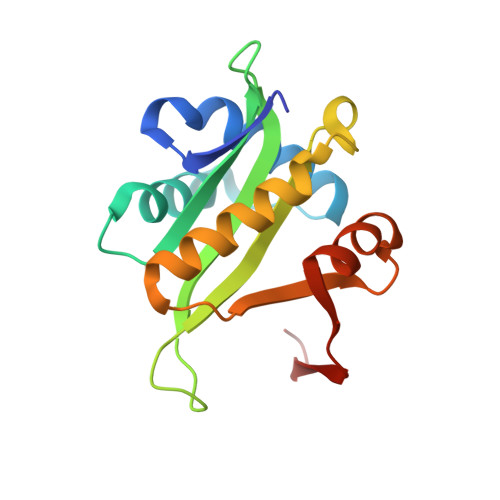Crystal structure of the histone acetyltransferase Hpa2: A tetrameric member of the Gcn5-related N-acetyltransferase superfamily.
Angus-Hill, M.L., Dutnall, R.N., Tafrov, S.T., Sternglanz, R., Ramakrishnan, V.(1999) J Mol Biol 294: 1311-1325
- PubMed: 10600387
- DOI: https://doi.org/10.1006/jmbi.1999.3338
- Primary Citation of Related Structures:
1QSM, 1QSO - PubMed Abstract:
We report the crystal structure of the yeast protein Hpa2 in complex with acetyl coenzyme A (AcCoA) at 2.4 A resolution and without cofactor at 2.9 A resolution. Hpa2 is a member of the Gcn5-related N-acetyltransferase (GNAT) superfamily, a family of enzymes with diverse substrates including histones, other proteins, arylalkylamines and aminoglycosides. In vitro, Hpa2 is able to acetylate specific lysine residues of histones H3 and H4 with a preference for Lys14 of histone H3. Hpa2 forms a stable dimer in solution and forms a tetramer upon binding AcCoA. The crystal structure reveals that the Hpa2 tetramer is stabilized by base-pair interactions between the adenine moieties of the bound AcCoA molecules. These base-pairs represent a novel method of stabilizing an oligomeric protein structure. Comparison of the structure of Hpa2 with those of other GNAT superfamily members illustrates a remarkably conserved fold of the catalytic domain of the GNAT family even though members of this family share low levels of sequence homology. This comparison has allowed us to better define the borders of the four sequence motifs that characterize the GNAT family, including a motif that is not discernable in histone acetyltransferases by sequence comparison alone. We discuss implications of the Hpa2 structure for the catalytic mechanism of the GNAT enzymes and the opportunity for multiple histone tail modification created by the tetrameric Hpa2 structure.
Organizational Affiliation:
Department of Biochemistry, University of Utah School of Medicine, Salt Lake City, UT 84132, USA.















